This post may contains affiliate links. Read our full disclosure here.
Ever found yourself staring at a blank room with zero clue where to start? I’ve been there! Understanding interior design styles was a game-changer for my decorating confidence. When you know the difference between modern and midcentury, or why Scandinavian spaces feel so cozy, you can make smarter choices for your home. Interior design styles aren’t just fancy labels—they’re practical roadmaps that help you shop with purpose, avoid expensive mistakes, and create spaces that truly feel like you.
In 2025, interior design styles continue to evolve while maintaining their core elements. Whether you’re furnishing your first apartment or refreshing your forever home, identifying your preferred interior design styles helps everything fall into place. I’ve put together this beginner-friendly guide to help you navigate the most popular aesthetics, figure out what speaks to you, and confidently bring your vision to life.
Popular Interior Design Styles Explained
Let’s break down the most distinctive design aesthetics you should know about. Each interior design style has its own personality, materials, and mood. Finding which resonates with you is the first step in creating a home you’ll love.
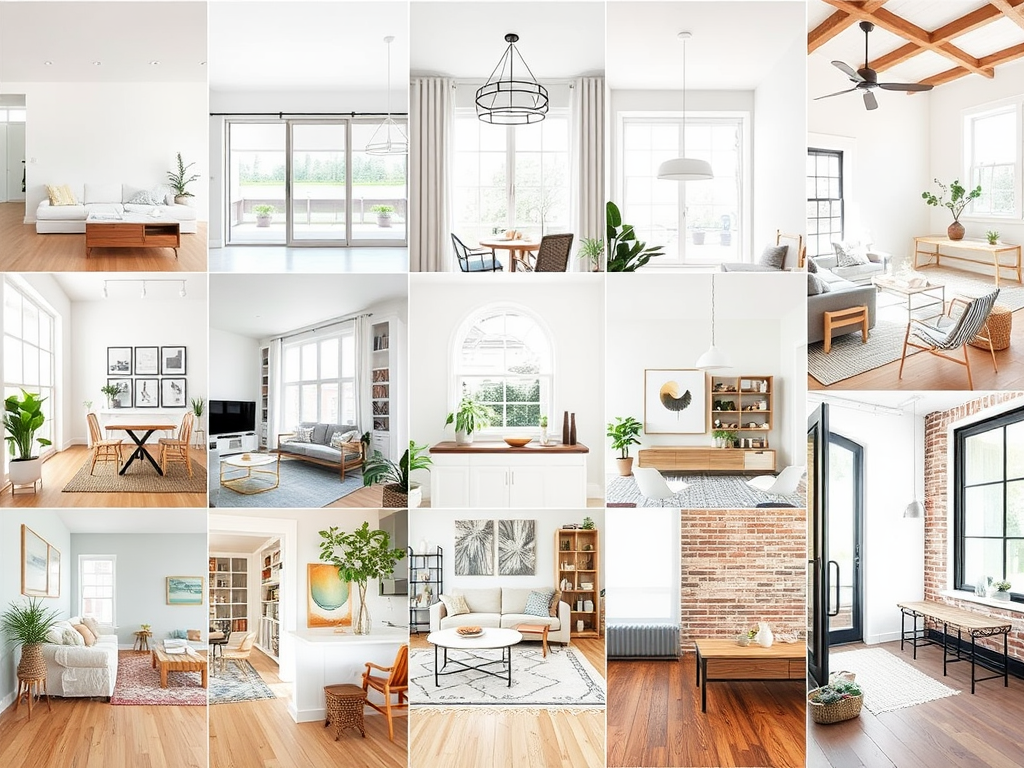
Modern Interior Design Styles
Modern design styles embrace clean lines, neutral color palettes, and open, uncluttered spaces. This aesthetic prioritizes function and simplicity over ornamental details. Think sleek furniture with minimal fuss, plenty of breathing room, and materials like glass, steel, and concrete that create a polished, contemporary feel.
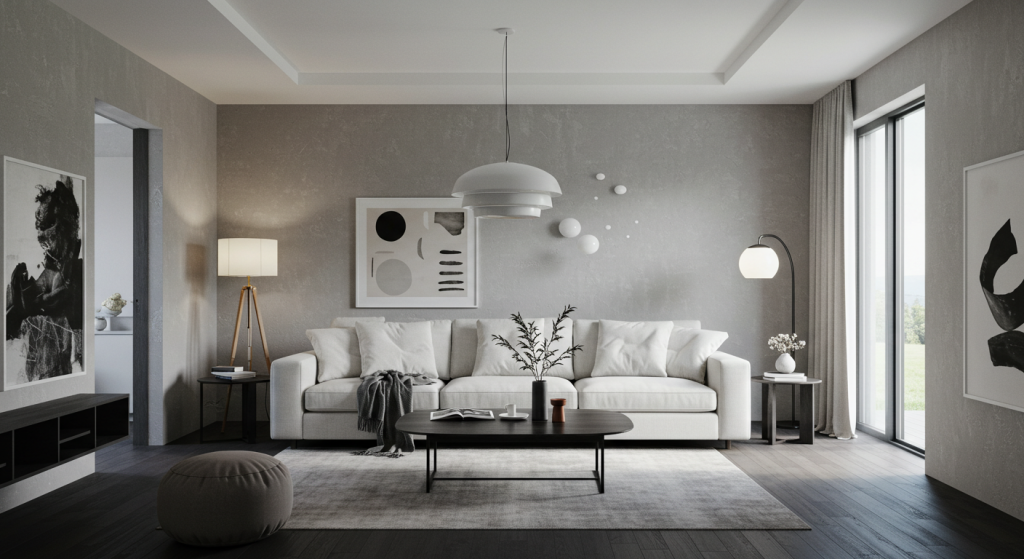
When I first experimented with modern design in my apartment, I learned that the key is intentional simplicity. Each piece should serve a purpose while maintaining visual harmony. This isn’t about cold, uncomfortable spaces—it’s about thoughtful minimalism that feels sophisticated.
- Stick to a neutral base (whites, grays, blacks) with bold accent pieces
- Choose furniture with simple, geometric shapes and clean edges
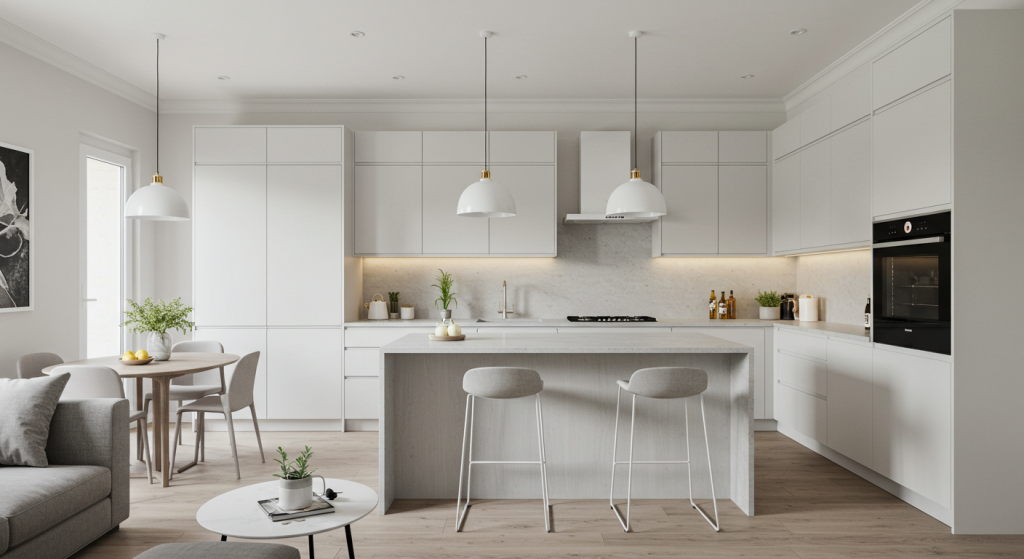
Minimalist Interior Design
While often confused with modern, minimalist style takes simplicity even further. The philosophy here is truly “less is more”—sparse furnishings, monochromatic color schemes, and absolutely no excess. Every single item in a minimalist space has a purpose, with little room for purely decorative objects.
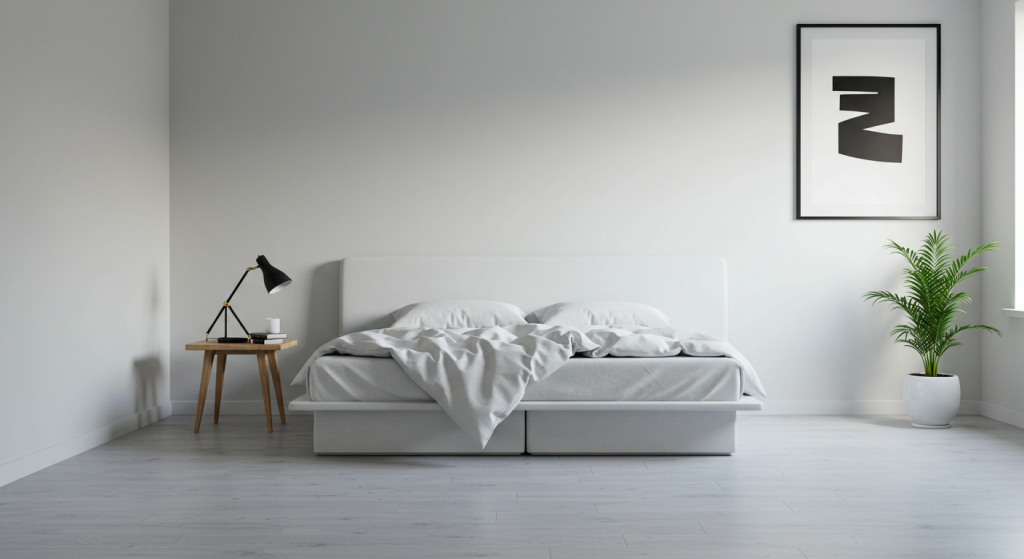
I tried going minimalist during a phase of my life when I craved simplicity, and it taught me that empty space is actually valuable. The breathing room creates a sense of calm that’s hard to achieve with more cluttered styles. The challenge is choosing those few perfect pieces rather than filling space.
- Declutter ruthlessly—if it doesn’t serve a purpose or bring joy, it goes
- Invest in multifunctional furniture pieces like storage ottomans or nesting tables
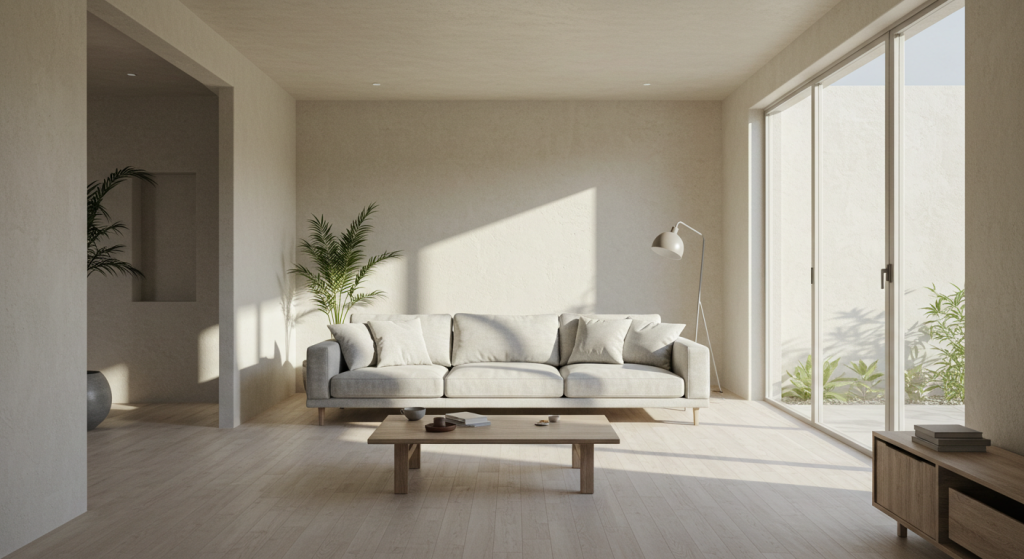
Traditional Interior
Traditional design styles offer timeless elegance with rich woods, symmetrical arrangements, and classic details. This style honors heritage and craftsmanship through ornate moldings, tufted furniture, and layered textiles. When done right, traditional spaces feel sophisticated yet comfortable—never stuffy or museum-like.
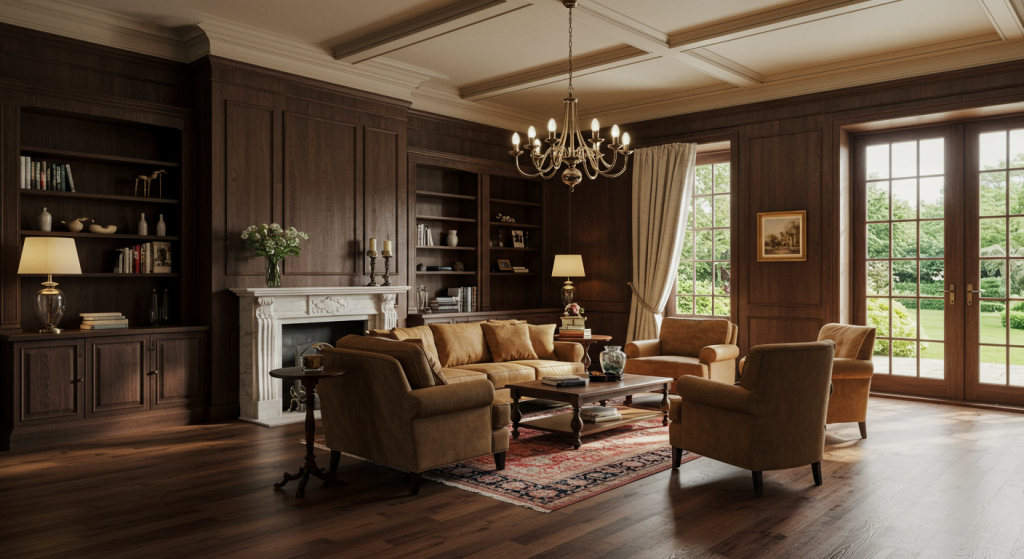
My grandmother’s home introduced me to traditional design, and I’ve always appreciated how it creates spaces that feel established and welcoming. There’s something reassuring about design elements that have stood the test of time, especially when given room to breathe.
- Mix genuine antiques with quality reproduction pieces for depth
- Incorporate warm, deep colors like burgundy, navy, or forest green
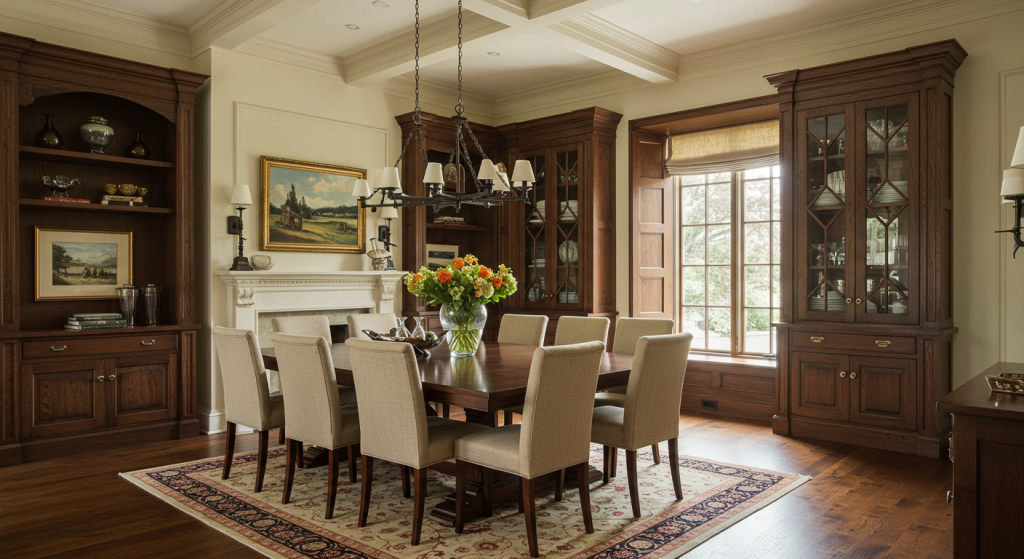
Bohemian Home Decor
Free-spirited and vibrant, bohemian home decor celebrates self-expression through patterns, textures, and global influences. This joyfully eclectic style features layered rugs, macramé hangings, and an abundance of plants. It’s the perfect style for collectors and travelers who want their spaces to tell stories.
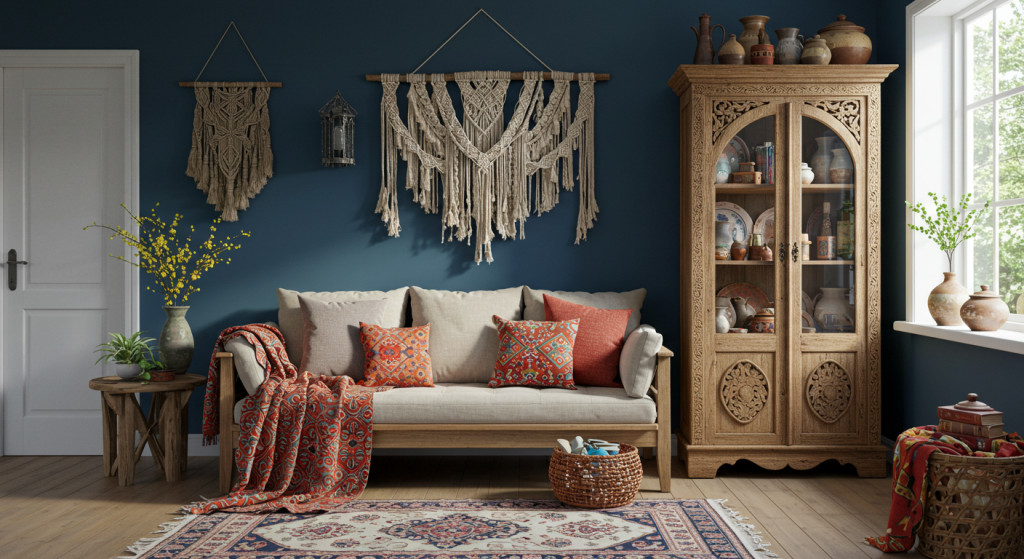
During my college years, I embraced boho style completely, and it taught me to trust my personal aesthetic instincts rather than following strict design rules. The best bohemian spaces feel collected over time rather than purchased as a matching set.
- Don’t shy away from mixing bold colors and patterns—more is more!
- Add plenty of plants for that lived-in, lush vibe
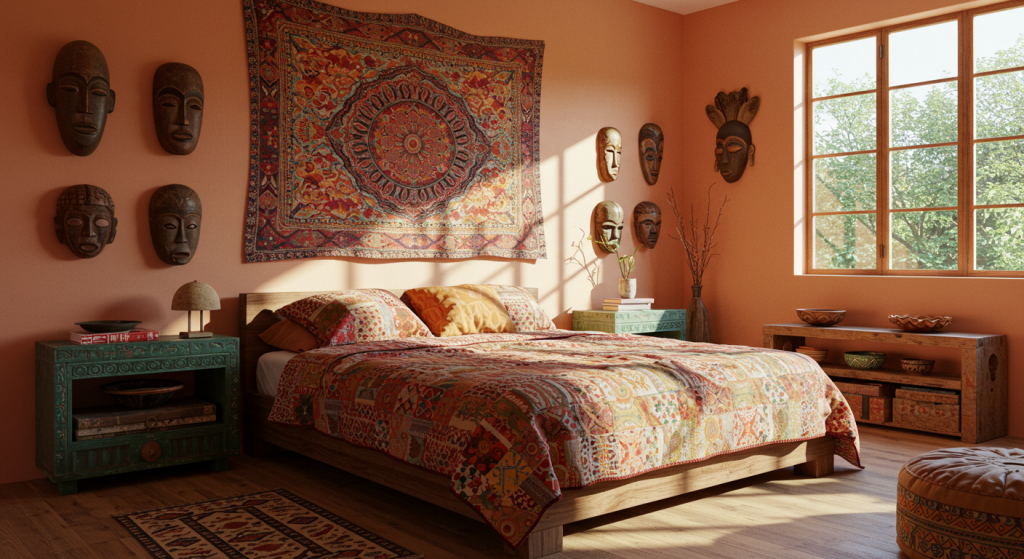
Scandinavian Inspired Interior Design Styles
Scandinavian home decor celebrates light, functionality, and natural simplicity. This Nordic-inspired aesthetic features bright white spaces, pale woods, and cozy textiles like wool throws and sheepskin rugs. The philosophy balances beauty with practicality, creating spaces that work efficiently while remaining inviting.
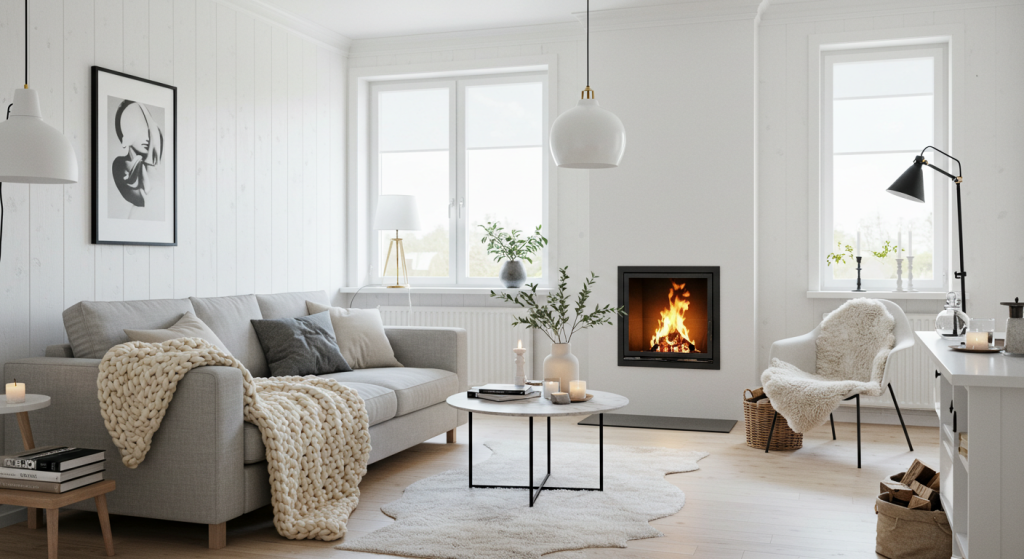
I fell in love with Scandinavian design when I lived in a small apartment with limited natural light. The light color palette instantly brightened my space and made it feel larger. This style taught me that functional doesn’t have to mean boring.
- Maximize natural light with sheer window treatments or strategically placed mirrors
- Incorporate hygge elements like candles, textured blankets, and warm lighting
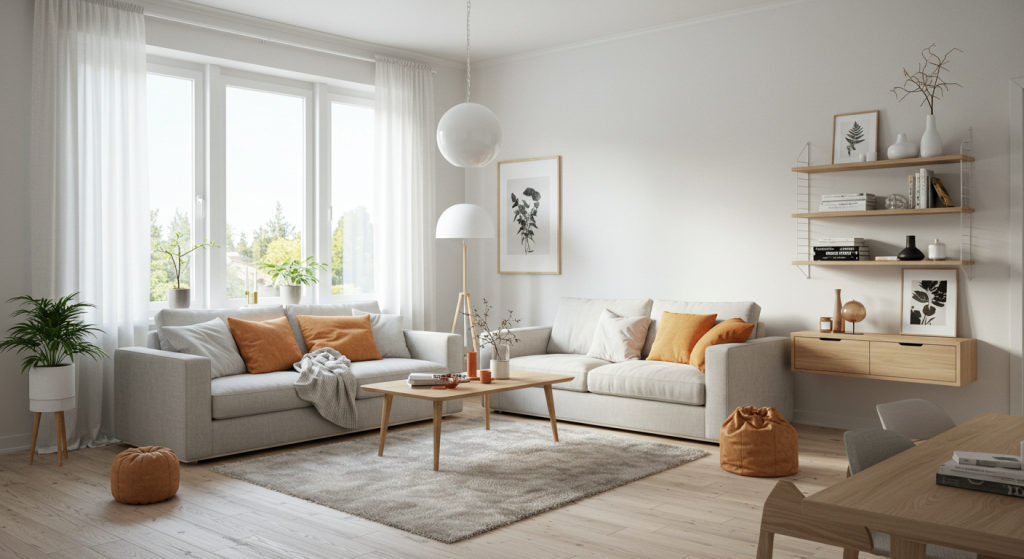
Midcentury Modern
This retro-inspired favorite draws from 1950s and 60s design, featuring organic shapes, tapered legs, and playful colors. Think iconic Eames chairs, teak sideboards, and atomic-age patterns. The style balances nostalgia with timeless appeal, explaining why it continues to captivate new generations.
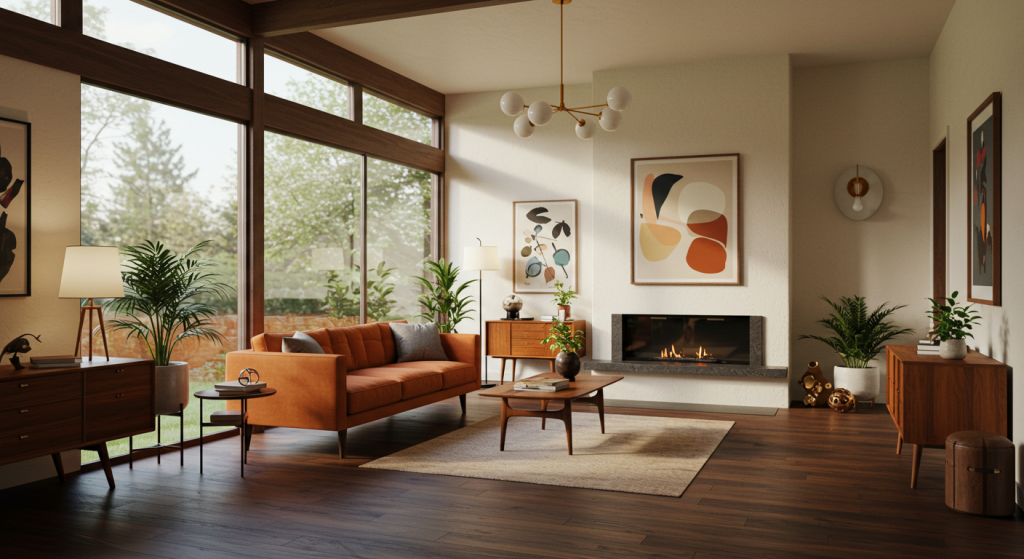
When I added my first midcentury piece—a walnut credenza—to my home, I was surprised by how easily it complemented modern elements. That’s the beauty of this style: it works wonderfully on its own or mixed with contemporary pieces.
- Pair authentic vintage finds with modern basics for balance
- Add pops of color through mustard yellow, olive green, or burnt orange accents
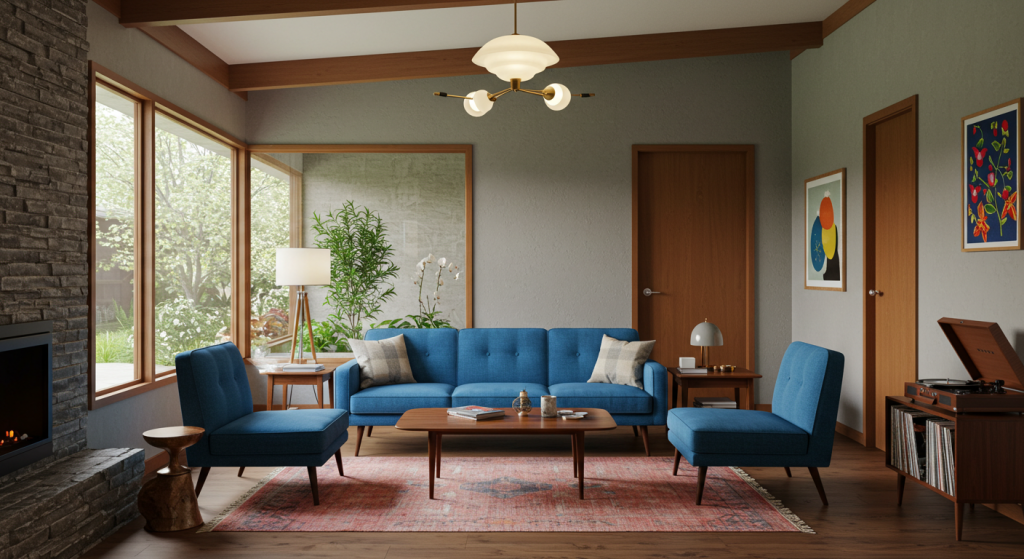
Rustic/Farmhouse With Modern Twist
Warm, lived-in, and natural, rustic farmhouse style celebrates imperfection and casual comfort. Characterized by exposed beams, reclaimed wood, and vintage touches, this style creates spaces that feel like they’ve evolved organically over time. Weathered finishes and neutral tones add to the cozy, unpretentious atmosphere.
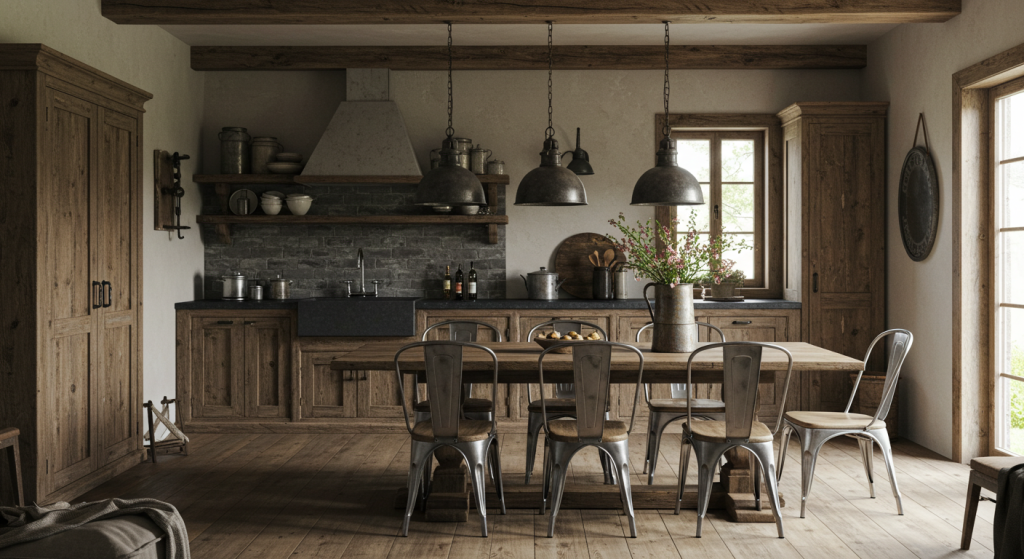
I experimented with farmhouse elements when decorating my first home, drawn to its approachable, family-friendly vibe. This style taught me to appreciate character over perfection—those small imperfections tell a story and add authenticity.
- Mix modern and antique pieces for a balanced look that isn’t too themed
- Add texture through galvanized metal, woven baskets, or rough-hewn wood
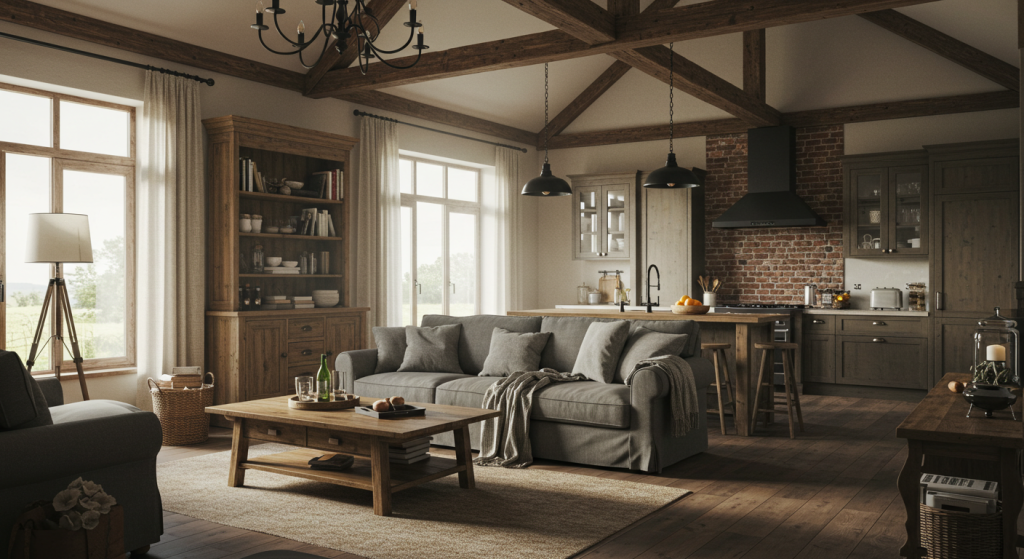
Coastal Interior Design Vibes
Light, breezy, and relaxed, coastal design brings seaside tranquility indoors. This style features a palette of whites and blues, natural textures like rattan and jute, and subtle nautical accents. Done right, it feels refreshing rather than themed, evoking the feeling of a perfect beach day.
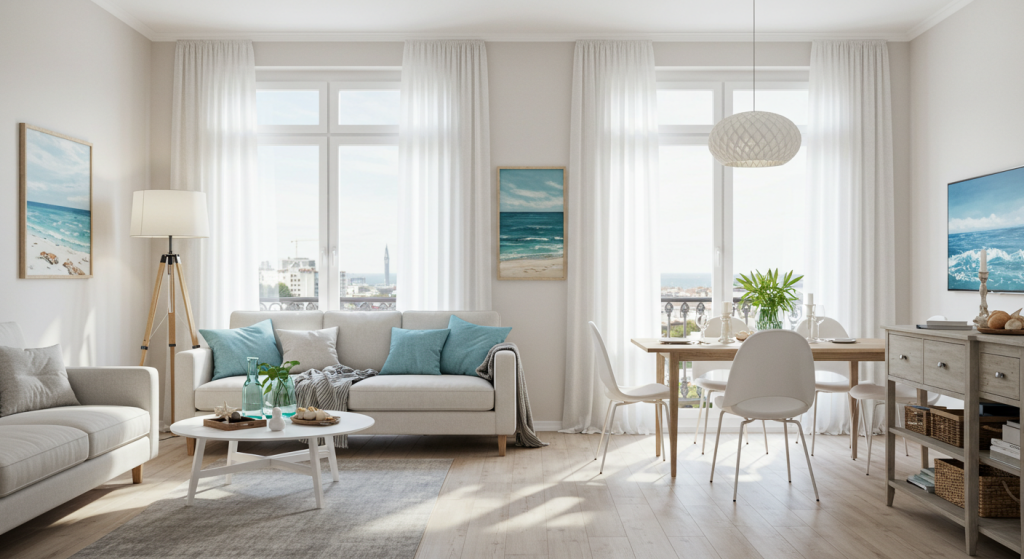
Living near the ocean influenced my appreciation for coastal style, where natural light becomes a design element itself. This aesthetic taught me how subtle references to a theme work better than obvious, heavy-handed decorating.
- Stick to a soft, sun-bleached color palette with ocean-inspired blues
- Choose casual, comfortable furniture with slipcovers for that relaxed feel
Industrial
Raw and edgy, industrial style celebrates utilitarian elements once hidden from view. Exposed brick walls, metal fixtures, and open ductwork create spaces that feel urban and authentic. Think converted warehouses, concrete floors, and furniture that mixes metal with reclaimed materials.
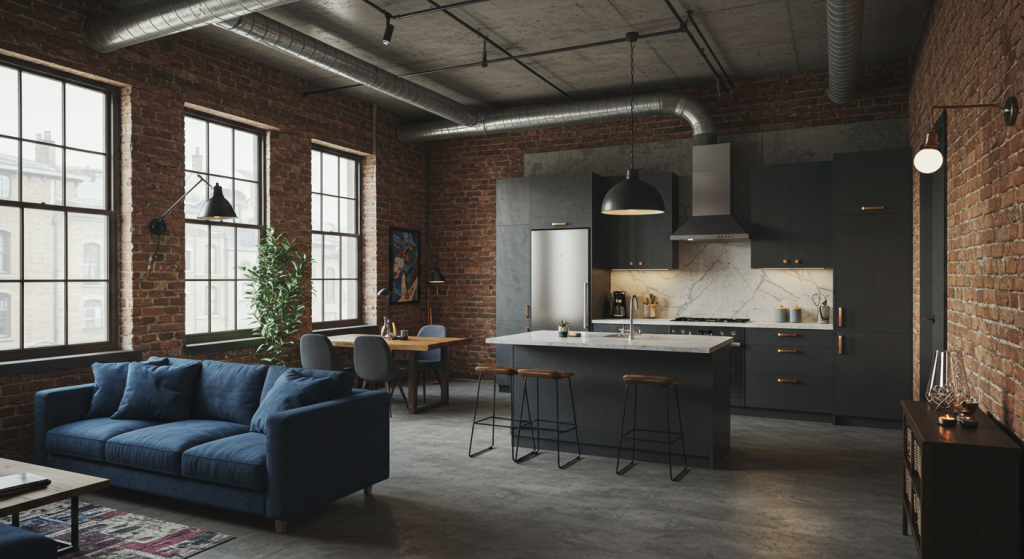
I incorporated industrial elements in my home office, loving how the style balances rugged and refined qualities. The key learning was that industrial doesn’t have to feel cold—the right textiles and lighting soften the harder edges.
- Balance hard materials with soft textiles like leather, wool, or canvas
- Incorporate vintage factory lighting or reproduction pendant lamps
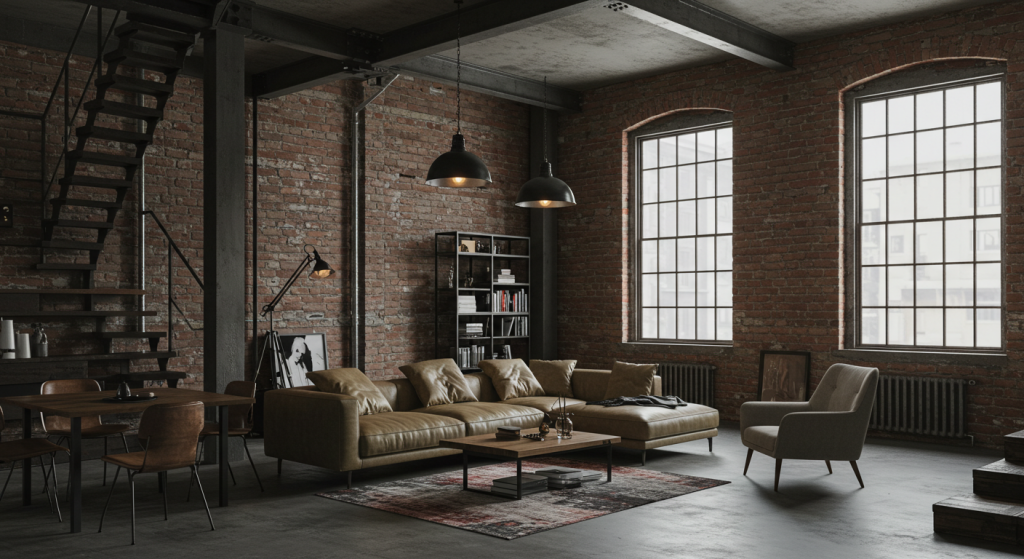
Eclectic Interior Design Style
Eclectic style thoughtfully combines various periods, styles, and colors to create spaces with personality and depth. Unlike random hodgepodge decorating, successful eclectic interior design styles feature intentional curation and subtle connecting elements. The result feels collected, layered, and uniquely personal.
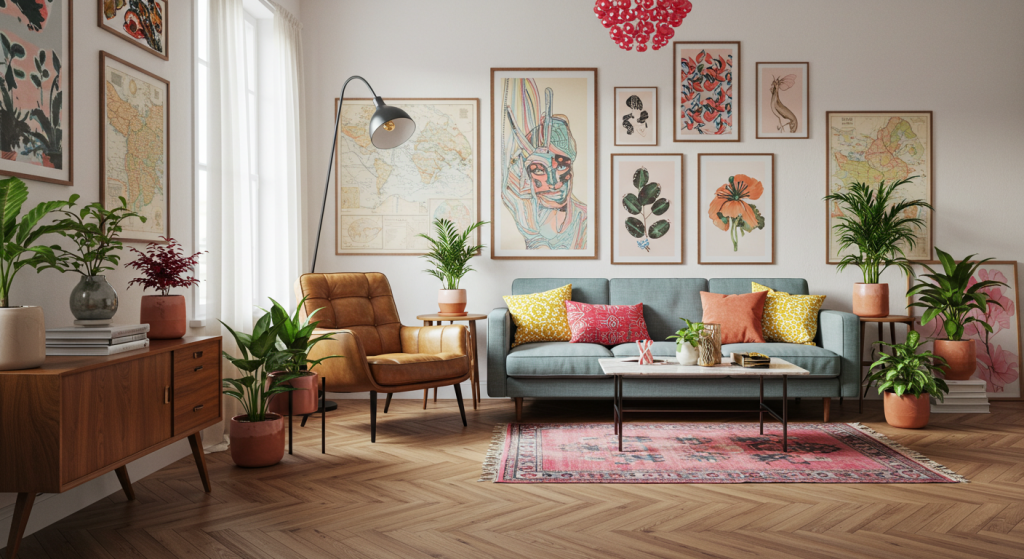
My current home leans eclectic, combining pieces I’ve collected through different phases of life. The biggest lesson? Meaningful objects create cohesion when they reflect your personal journey, even when they span different styles and eras.
- Find one unifying element—color, texture, or shape—to create visual connection
- Mix high and low-end pieces for complexity and character
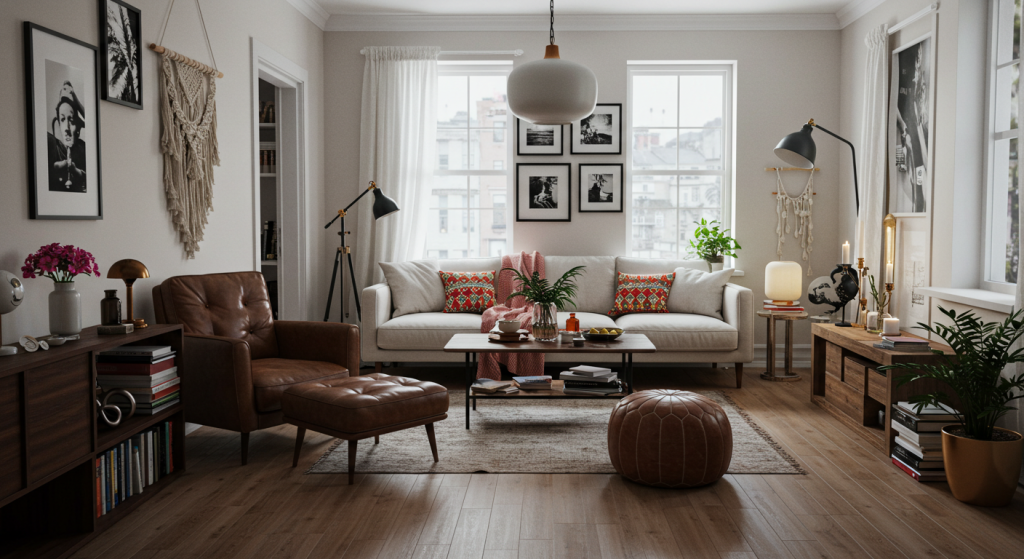
How to Discover Your Interior Design Style
Finding your personal aesthetic shouldn’t feel like a test you can fail. It’s more about tuning into what naturally attracts you. Here are some practical ways to discover which interior design styles speak to you:
- Create a visual collection: Save images from Pinterest, Instagram, or magazines that instantly appeal to you. After gathering 20-30 images, look for patterns in what you’ve selected—similar colors, materials, or overall vibes.
- Look at your wardrobe: Your clothing choices often mirror your design preferences. If you gravitate toward classic, structured clothes, traditional or modern styles might resonate. If your closet is filled with boho patterns and textures, you might love equally free-spirited spaces.
- Notice your reactions: Pay attention to how you feel in different environments. Which friends’ homes, hotels, or restaurants make you feel most comfortable? What elements do those spaces share?
- Try style quizzes: While no quiz can perfectly capture your taste, they can provide helpful starting points for exploration. Just remember to trust your gut over any quiz results.
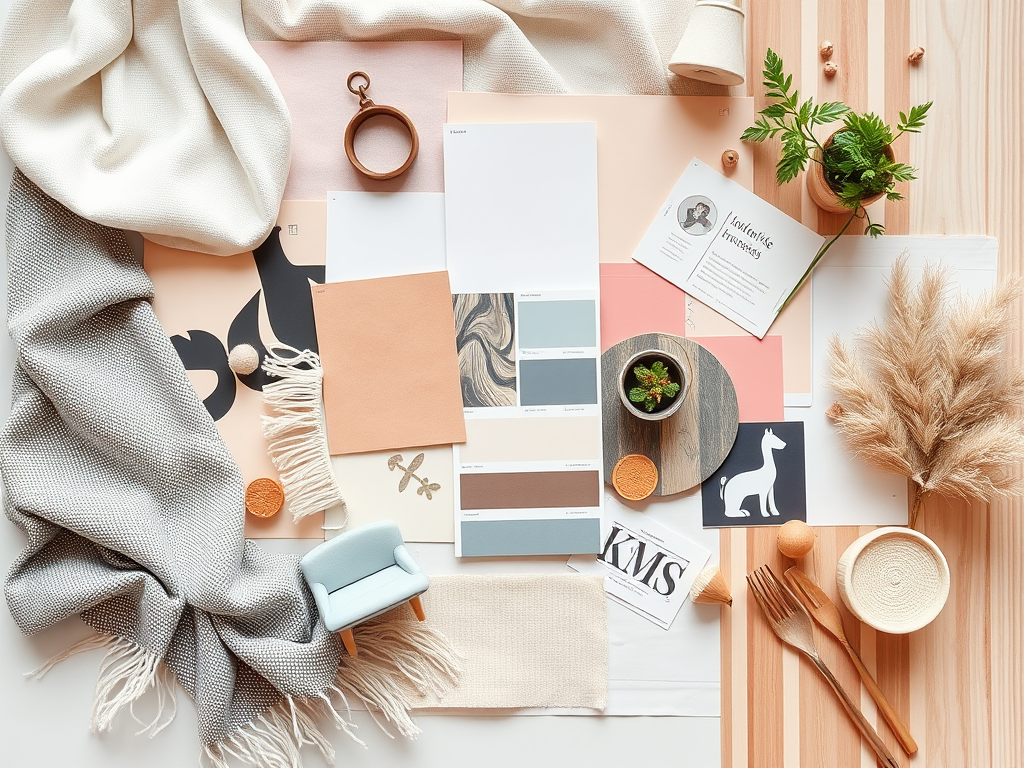
Blending Interior Design Styles Successfully
The most interesting homes rarely follow just one interior design style rigidly. Combining elements from different aesthetics creates spaces with depth and personality. The trick is finding the right balance so your home feels curated, not chaotic.
Some of the most successful combinations I’ve seen include modern-rustic, which pairs clean lines with natural textures, and traditional-bohemian, which brings free-spirited elements to classic foundations. The key to successful style mixing is finding common threads—be it color, material, or mood—that tie diverse pieces together.
When combining different interior design styles, start with a dominant style (about 70% of your space) and add secondary influences more subtly. For example, a primarily Scandinavian room might incorporate industrial lighting or bohemian textiles as accents. This approach creates visual interest while maintaining overall harmony.
Remember that cohesive color palettes can unite even dramatically different styles. A consistent color story helps diverse pieces feel like they belong together, even when their forms differ significantly.
Finding Your Authentic Style
The most important thing to remember about interior design styles is there’s no “correct” answer—only what makes you happy in your space. Your home should reflect who you are, not what’s trending or what impresses others. The best style is the one that makes you feel at home.
Through years of helping friends decorate and refining my own aesthetic, I’ve learned that authentic spaces evolve naturally over time. Don’t rush to label your style or complete your home all at once. Allow yourself to experiment, collect meaningful pieces slowly, and create a space that tells your story.
When you understand your design preferences, decorating becomes less stressful and more enjoyable. You’ll shop more confidently, knowing what fits your aesthetic rather than being swayed by every passing trend. You’ll also waste less money on impulse purchases that don’t actually work in your space.
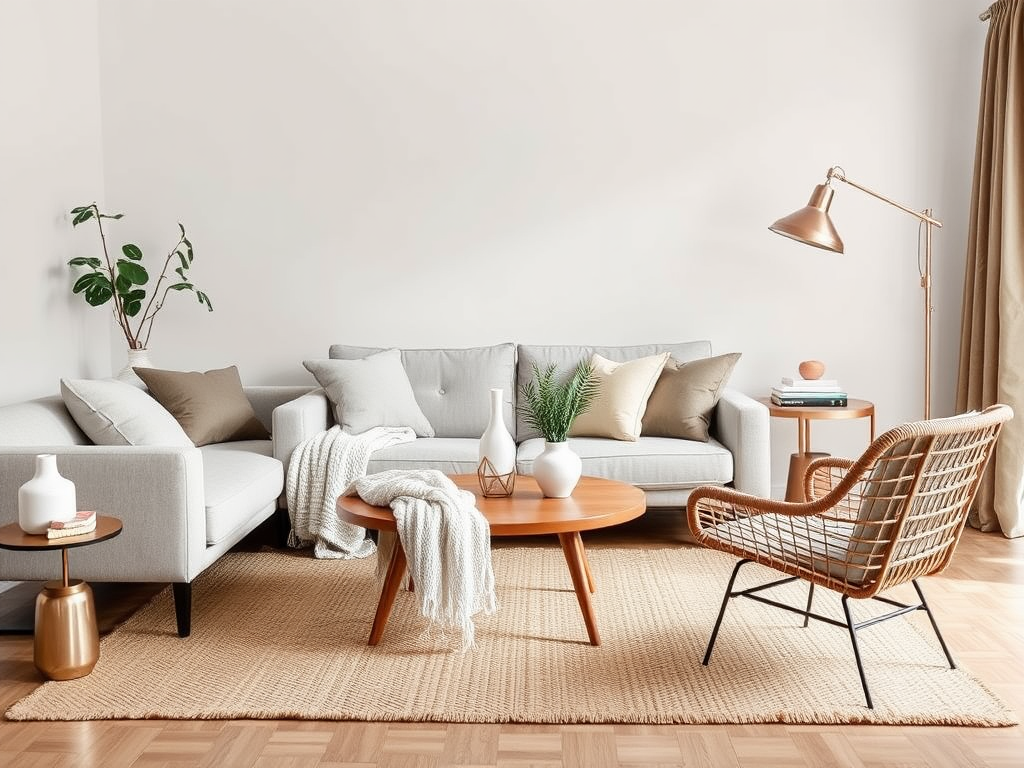
Which interior design styles resonate most with you? Do you find yourself drawn to one particular aesthetic or do you prefer blending several? Remember that your style can evolve as you do—the best spaces are those that grow along with us. Let me know in the comments which elements from these styles speak to you!




